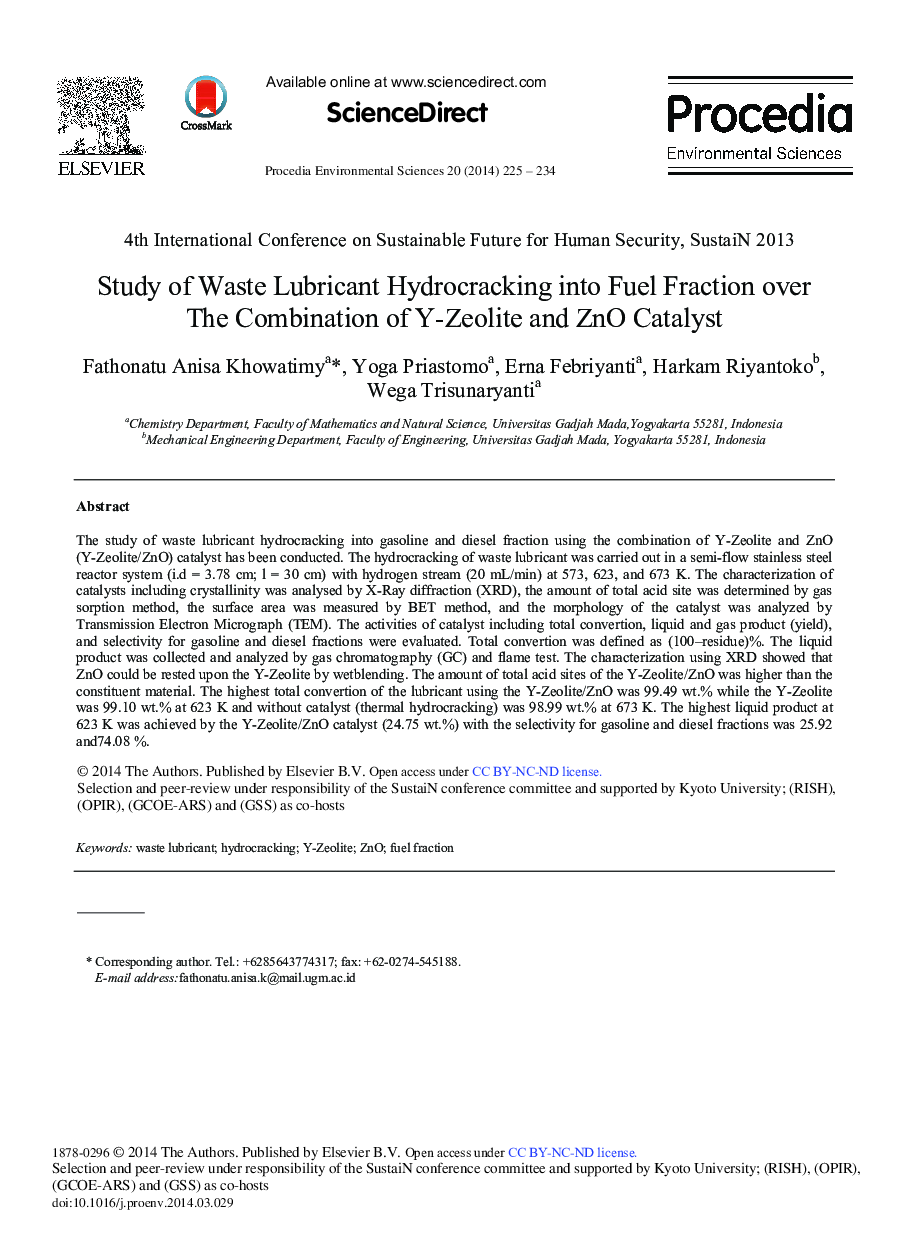| کد مقاله | کد نشریه | سال انتشار | مقاله انگلیسی | نسخه تمام متن |
|---|---|---|---|---|
| 4402221 | 1618624 | 2014 | 10 صفحه PDF | دانلود رایگان |

The study of waste lubricant hydrocracking into gasoline and diesel fraction using the combination of Y-Zeolite and ZnO (Y-Zeolite/ZnO) catalyst has been conducted. The hydrocracking of waste lubricant was carried out in a semi-flow stainless steel reactor system (i.d = 3.78 cm; l = 30 cm) with hydrogen stream (20 mL/min) at 573, 623, and 673 K. The characterization of catalysts including crystallinity was analysed by X-Ray diffraction (XRD), the amount of total acid site was determined by gas sorption method, the surface area was measured by BET method, and the morphology of the catalyst was analyzed by Transmission Electron Micrograph (TEM). The activities of catalyst including total convertion, liquid and gas product (yield), and selectivity for gasoline and diesel fractions were evaluated. Total convertion was defined as (100–residue)%. The liquid product was collected and analyzed by gas chromatography (GC) and flame test. The characterization using XRD showed that ZnO could be rested upon the Y-Zeolite by wetblending. The amount of total acid sites of the Y-Zeolite/ZnO was higher than the constituent material. The highest total convertion of the lubricant using the Y-Zeolite/ZnO was 99.49 wt.% while the Y-Zeolite was 99.10 wt.% at 623 K and without catalyst (thermal hydrocracking) was 98.99 wt.% at 673 K. The highest liquid product at 623 K was achieved by the Y-Zeolite/ZnO catalyst (24.75 wt.%) with the selectivity for gasoline and diesel fractions was 25.92 and74.08%.
Journal: Procedia Environmental Sciences - Volume 20, 2014, Pages 225-234